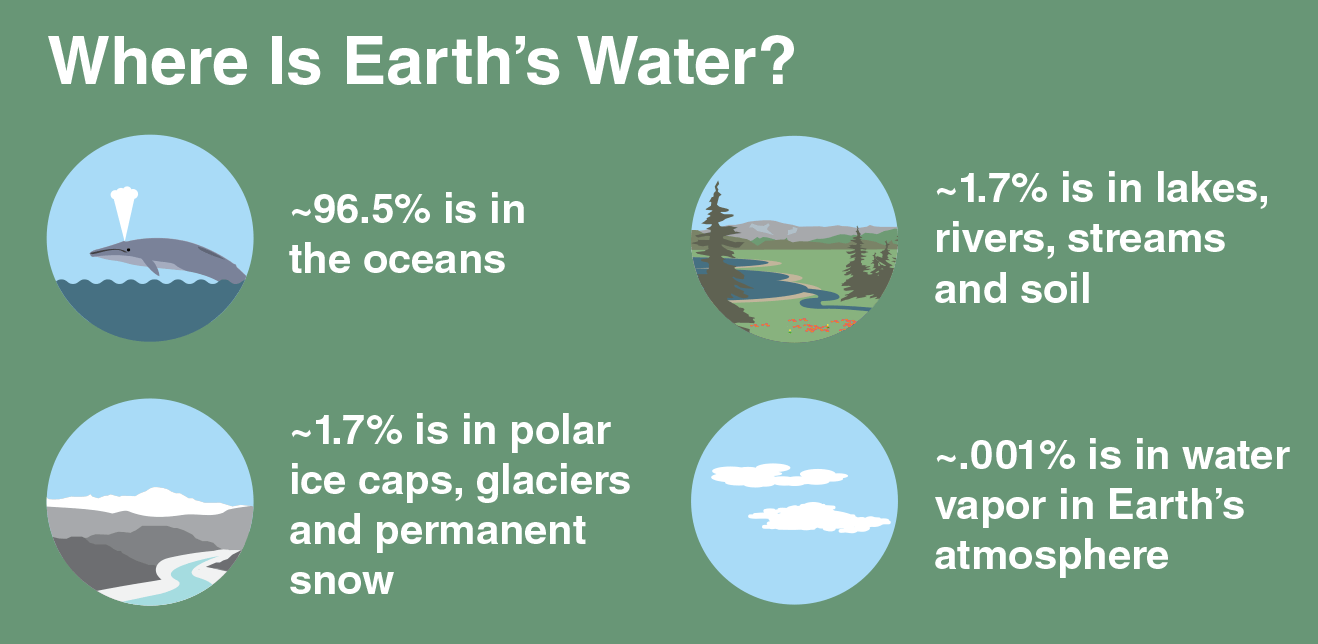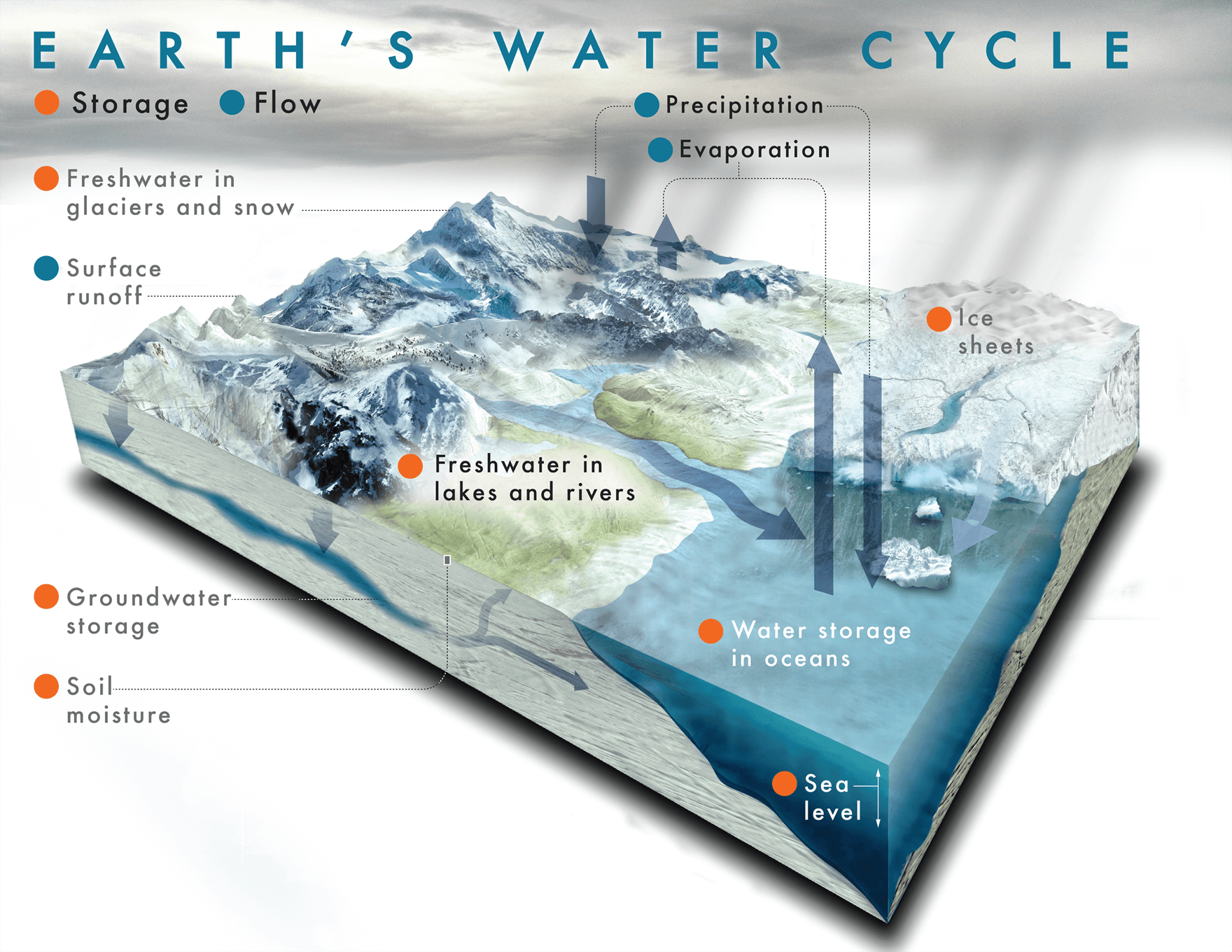AIM: TO LOOK AT THE WATER CYCLE AND how cLIMATE CHANGE IS AFFECTING IT.
Definition:
Water cycle
- The cycle of processes by which water circulates between the earth's oceans, atmosphere, and land, involving precipitation as rain and snow, drainage in streams and rivers, and return to the atmosphere by evaporation and transpiration.

Scientific words:
- Evaporation. When water is heated by radiant energy it turns into water vapor.
- Transpiration. Evaporation from plants.
- Condensation. When water vapor cools, molecules join together and form clouds.
- Precipitation. When clouds get heavy the waters falls as rain, sleet, hail, or snow.
- Acidification: the action or process of making or becoming acidic.
We will be conducting an experiment that looks at the different ways that climate change is affecting the water cycle.


THE WATER CYCLE EXPERIMENT
Bag 1: Normal Water cycle
Bag 2: Water cycle with CO2 added: like Oceans in climate change
Bag 3: Water cycle with ice added: like Antarctica in climate change
Material:
- Plastic zip lock bag.
- Vivid marker.
- One cup of water.
- 2 drops of food colouring.
Steps:
- One person needs to get the plastic zip lock bag and a vivid marker.
- Draw a water cycle on the bag.
- Get a cup of water.
- Get a teacher to put two drops of blue food colouring in.
- Hang the bag up on a wall and wait.
Two Images:
This is my groups first normal experiment.
My Groups soda water experiment.
Findings:
Conclusion:
Material:
- Plastic zip lock bag.
- Vivid marker.
- One cup of soda water.
- 2 drops of food colouring.
- Litmus paper.
Steps:
- Get a plastic zip lock bag.
- Draw on the plastic zip lock bag.
- Put one cup of soda water in the plastic zip lock bag.
- Get the teacher to put in two drops of blue food colouring.
- Hang the bag up on a wall and wait.



No comments:
Post a Comment
Note: Only a member of this blog may post a comment.